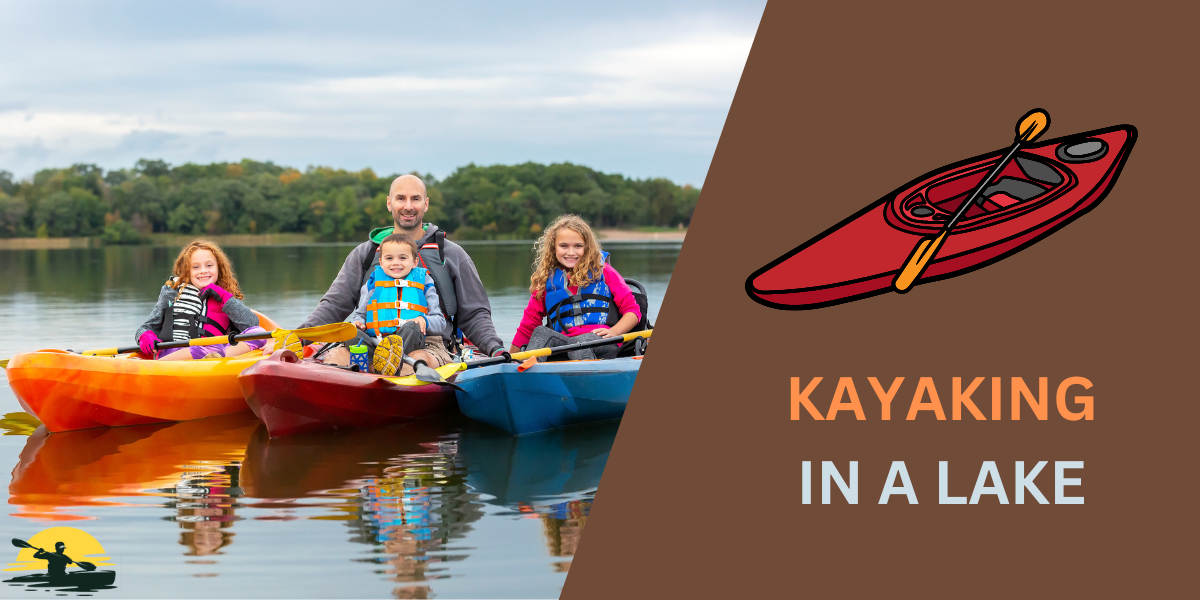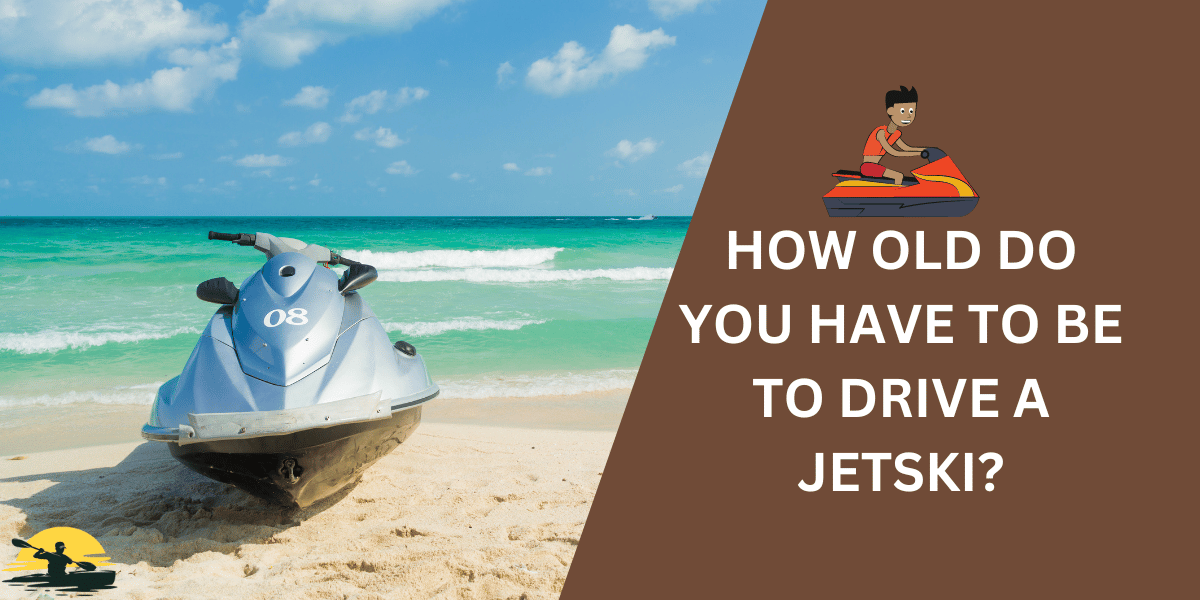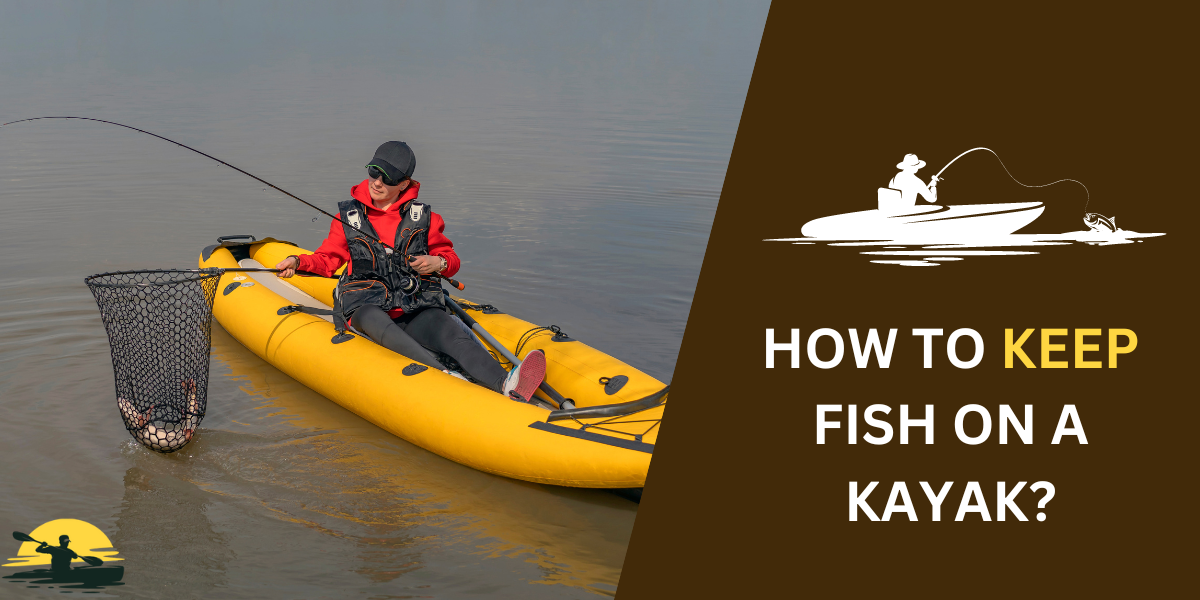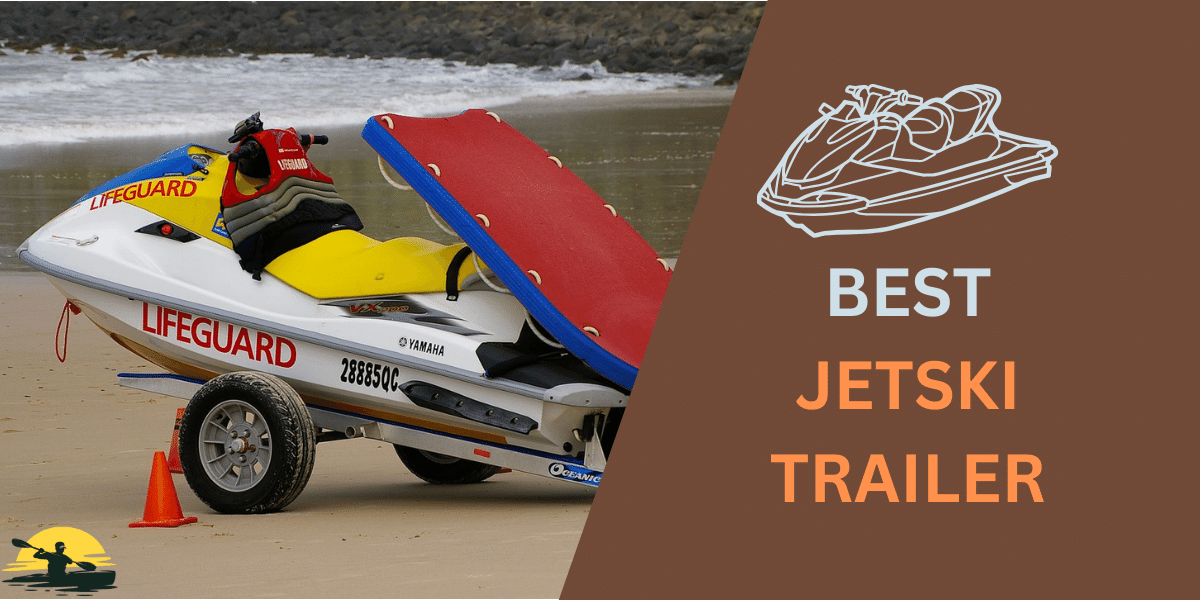
You’ve got the perfect kayak for exploring—now, how do you get it to the water?
Kayaks are cool, but they’re seriously long and awkward to move around.
You don’t want to scratch up your car or, worse, see your kayak go flying down the road!
Should you use a roof rack, toss it in a truck bed, or try some weird balancing act on top of your car?
It gets confusing fast!
Relax, we’ve got your back!
This guide will break down all the best ways to haul a kayak.
Whether you’re using a roof rack, truck bed, or something more creative, we’ll ensure your boat arrives at the launch site safely.
It’s time to ditch the stress and start paddling!
- Solo Hauling: For short distances, use grab handles or rest the kayak on your shoulder. For longer walks, get a kayak cart. Loading onto your car, lift from the back end first.
- Buddy System: Lifting and loading with a friend is much easier and safer.
- Gear Up Roof racks with J-cradles or saddles hold your kayak securely. Trailers are great for multiple kayaks or long trips. Truck beds work, too – secure it well!
- Safety First: Always use cam buckle straps to tie your kayak down. Bow and stern lines add extra security. Protect your kayak and car with padding.
- Extra Tips: Pool noodles are cheap rack padding. Clean your kayak after use. Always double-check everything before hitting the road!
Hauling a Kayak Solo
Paddling alone?
Don’t worry; you can still get your kayak into the water.
Here’s how to handle it like a pro:
The Carry: Short Trips Only: Need to move your kayak a short distance, like across a parking lot? Use those grab handles! Most kayaks have them at the front and back. Remember to bend your knees, not your back, for a safe lift! If the walk’s a bit longer, try resting one end of the kayak on your shoulder. Switch sides to give yourself a break.

- Get Rolling: Kayak Carts These little wheeled carts are lifesavers! They strap under your kayak, letting you pull it along instead of carrying the whole weight. This is great if you need to walk a fair distance to the launch site.
- Up and On Your Car Got a roof rack system? Here’s the safest way to get your kayak loaded:
- From Behind is Best: Stand at the back of your car, lift the kayak’s rear end, and rest it on your car’s rear cross bar. Some cars have rollers to make this extra smooth.
- The Slide and Guide: Now, hold the front of your kayak and slowly push it up until it rests safely on your rack system. Foam blocks or pads on your rack will help protect your boat.
Important Note: If your car is taller, you might need a step stool or get some help lifting it. It’s better to be safe than to try to muscle it up alone!
Hauling with a Buddy
Do you have a friend to help?
Teamwork makes hauling a kayak a whole lot easier!
Here’s how to load it up safely and get ready for your adventure:

- The Two-Person Lift
- Position yourselves at the bow (front) and stern (back) of the kayak.
- On the count of three, lift together! Keep the kayak level and walk carefully to your vehicle.
- Loading onto a Roof Rack
- Place the kayak onto the rack system. Please make sure it’s in the proper position (usually upright and facing kayak forward). Some racks have special cradles for kayaks.
- Secure it tightly! Use at least two cam buckle straps over the kayak and around the crossbars of the rack.
- For extra stability, you can add bow and stern straps to the front and back of your vehicle. These attach to your bumper or hitch and keep the kayak from shifting.
- Truck Beds: A Kayaker’s Friend
- If you’ve got a pickup truck, lower the tailgate for extra length when loading.
- Carefully slide your kayak into the pickup bed. A bed liner or tonneau cover helps protect the boat.
- Secure it just like you would on a roof rack! Cam straps attached to the truck’s side rails keep your kayak from moving around.
- Transporting Kayaks
- Special rack systems can carry multiple kayaks safely. They stack boats securely to save space.
- If you’re hauling several kayaks on a trailer, secure them carefully with straps. You don’t want a kayak pile-up on the highway!
- Safety Tips
- For longer trips where the kayak sticks out, a red flag at the end is often required by law. This makes sure other drivers see your load.
- Be careful! Kayaks extending beyond your vehicle can be dangerous if not properly secured and marked.
Important Notes:
- Hauling a big, heavy kayak onto a tall vehicle is tough, even with help. If it feels too dangerous, try the solo methods from the previous section instead.
- Never try to transport a kayak inside your car unless it’s an inflatable or very short model. It’s a bad idea for safety and will take up tons of space.
- If storing your kayak at home, keep it off the ground. A wall mount in your garage or shed is ideal.
Vehicle Options and Accessories
The right gear makes hauling your kayak way less stressful.
Here’s a breakdown of the most common options:

1. Roof Kayak Racks
- J-Cradles: Shaped like a “J,” these hold your kayak sideways for better space-saving.
- Saddles: These cradle your kayak upright position, offering more support.
- Stackers: Got multiple kayaks? Stackers let you carry them on top of each other.
- Important: Make sure your rack system fits your specific car. You’ll need crossbars that attach to your roof.
2. Trailers
- If you regularly haul multiple kayaks or go on long trips, trailers are amazing!
- You can load and unload kayaks at ground level, which is much easier on your back.
- Trailers offer space for other gear, too, making them perfect for camping adventures.
3. Truck Beds
- Slide your kayak in the bed with the tailgate down. If your kayak is longer, a tailgate pad or extender makes it even easier.
- Secure with cam buckle straps to the truck’s side rails – just like on a roof rack!
4. Inside Your Car
- This only works for inflatable kayaks or very short models.
- It’s not the safest option, and it eats up tons of passenger space.
5. Extra Gear
- Foam Blocks: Cheap and versatile, these rest on your roof rack to protect your kayak during safe transport.
- Bow and Stern Lines: These extra straps attach to the front and back of your car, preventing your kayak from shifting forward or backward.
- Kayak Carts: Even if you load onto a vehicle, carts make it way easier to move your kayak short distances.
Remember: Safety first! Always properly secure your kayak, no matter what method you use. You don’t want to see it bouncing down the road behind you!
Securing Your Kayak
You’ve got your kayak loaded, but the job’s not done
Here’s how to make sure it stays put during the whole drive:
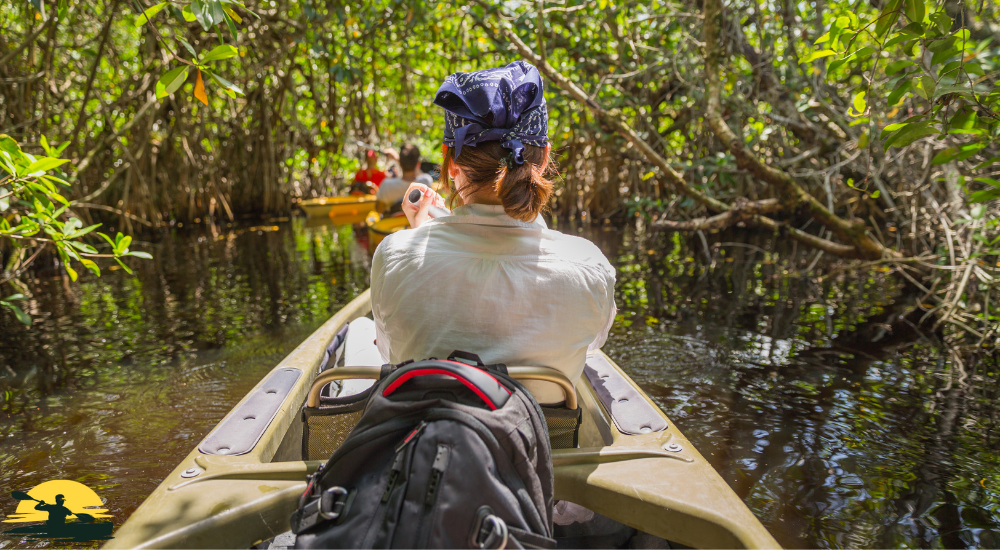
It’s All About the Straps
- Cam buckle straps are your best friend. They tighten easily and hold strong.
- At least two straps should go over your kayak and around your roof rack or through the truck bed.
- Don’t overtighten! You can damage your kayak if you squeeze it too hard.
Bow and Stern Lines: The Extras
- These straps connect from the front (bow) and back (stern) of your kayak to your car.
- Think of them like extra insurance, preventing the kayak from sliding forward or backward, especially during sudden stops.
Preventing Scratches
- Use padding where your kayak rests on the rack or truck bed. Foam blocks, pool noodles, or even old towels can help.
- Secure any loose straps so they don’t flap around and scratch your car’s paint.
Know the Rules
- Check your local laws!
- Some places require a red flag on anything sticking out past your rear bumper.
- Lights might be needed if your kayak blocks your taillights.
- always check the rear window after heading up to the destination.
- try to safely transport the kayaks
Safety Reminders
- Double-check everything before you hit the road. A loose kayak is a serious hazard!
- Drive carefully, especially on windy days. Your kayak can catch the wind like a sail, affecting how your vehicle handles it.
- After your trip, rinse your kayak (especially if you’ve been in saltwater) and let it dry before storing it.
Additional Tips and Tricks
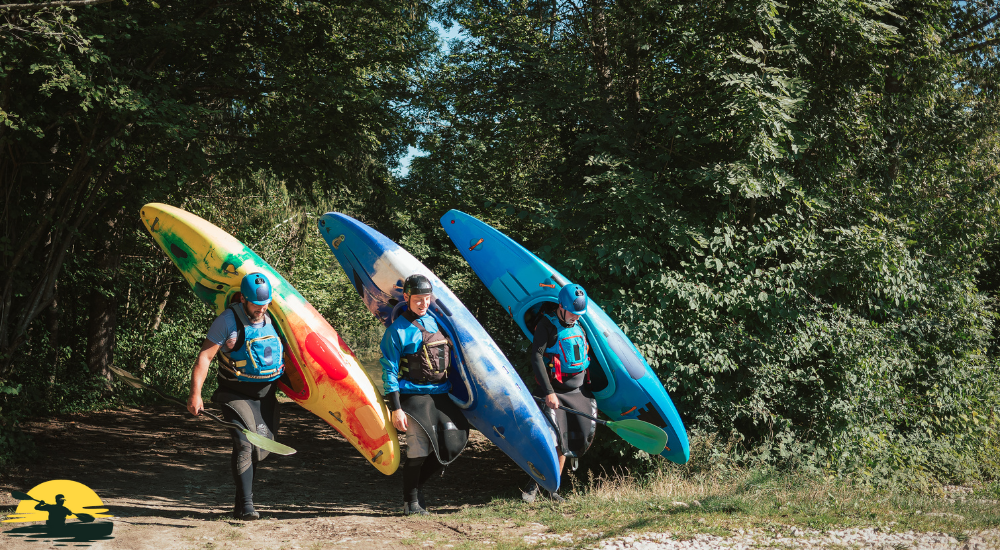
Pool Noodle Power
Want cheap and easy padding for your roof rack?
Cut pool noodles in half and slide them over the bars.
They’ll cushion your kayak and help prevent scratches.
Storing Your Kayak Cart
Space tight?
Some kayak carts break down for easy storage, while others can hang on a wall or hook onto your rack when you need to use them.
After-Adventure Cleanup
Rinse your kayak after each trip, especially after saltwater adventures.
Salt and dirt can build up and cause damage.
Before storing your kayak, let it dry completely to keep mold at bay.
Pre-Trip Checklist
Avoid last-minute stress with a quick checklist!
Could you make sure your straps are in good shape, your kayak is securely attached, and the bow and stern lines are in place (if you use them)?
Please check if your area requires a red flag or lights for long loads.
Extra Hacks
For extra peace of mind, consider locking straps to deter theft.
Adding reflective tape to your kayak can boost visibility for those nighttime paddles.
Be bold and ask for help, especially if your kayak feels too heavy or awkward to handle alone.
Conclusion
Finding the right way to haul your kayak depends on your vehicle, how strong you are, and the type of adventures you like.
Whether you go solo or team up with a friend, always focus on safety.
A secure kayak means you can relax and enjoy the ride to your favorite paddling spot!
Here’s a quick reminder:
- Choose the hauling method that works best for you.
- Always secure your kayak properly – no shortcuts!
- Drive carefully with a kayak on your vehicle.

Frequently Asked Questions
Can I haul a kayak with a small car?
Yes! Smaller vehicles often have roof rack options. If your kayak is short enough, you might even fit it inside with the seats folded down (only recommended for inflatables or very small models).
Do I need a trailer to carry multiple kayaks?
Not necessarily. Special roof rack systems can safely carry multiple kayaks. However, if you regularly haul many kayaks or go on long trips, a trailer is a great investment, offering more space and easier loading.
Is it safe to put a kayak in a truck bed?
Absolutely! You can secure the kayak with cam buckle straps attached to the truck’s side rails. A tailgate extender is helpful for longer kayaks. To protect your kayak, consider a bed liner or tonneau cover.
How do I know if my kayak is secure?
Give it the shake test! Before driving, try to wiggle your kayak. If it moves around easily, tighten the straps and add bow and stern lines for extra security.
Do you know if I can carry other gear when hauling my kayak?
It depends. Trailers offer more space for gear. With roof racks, be mindful of your vehicle’s weight limit. Only put gear inside the kayak if it’s waterproof!


